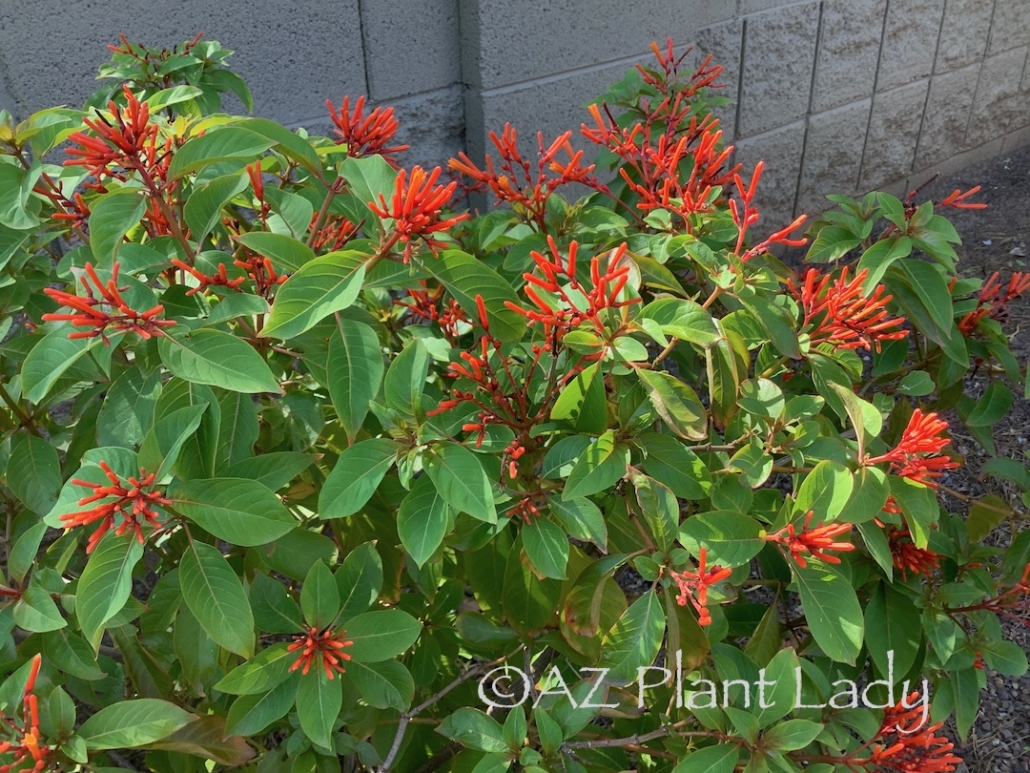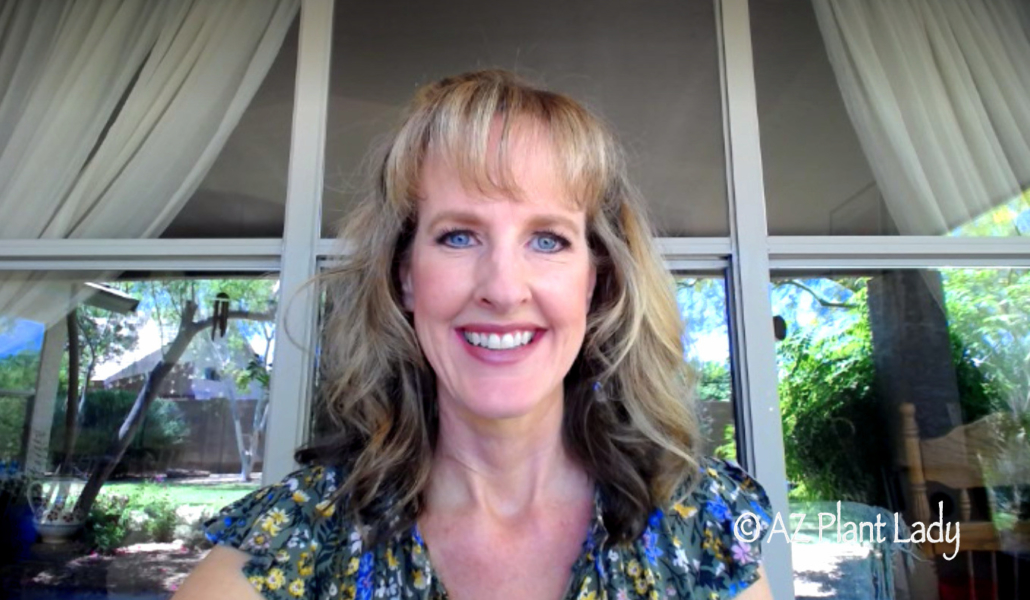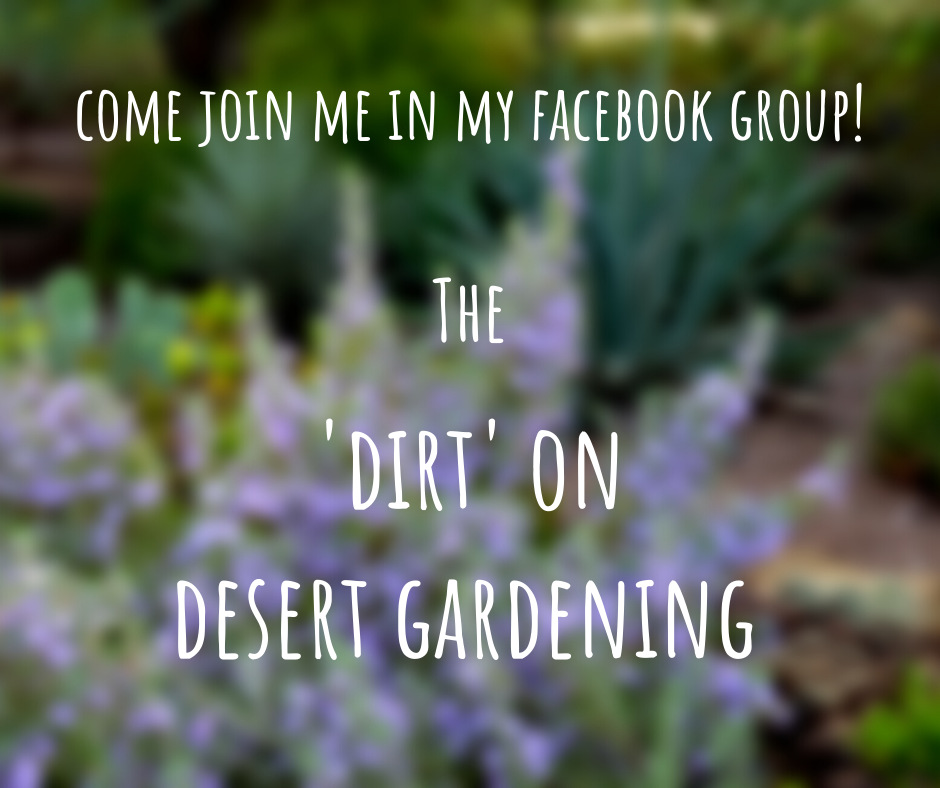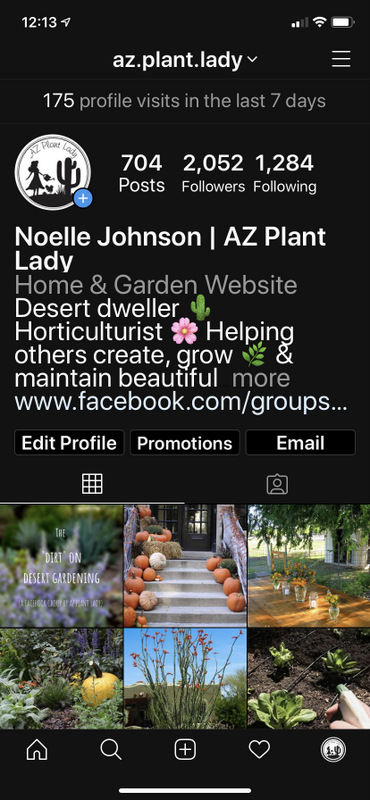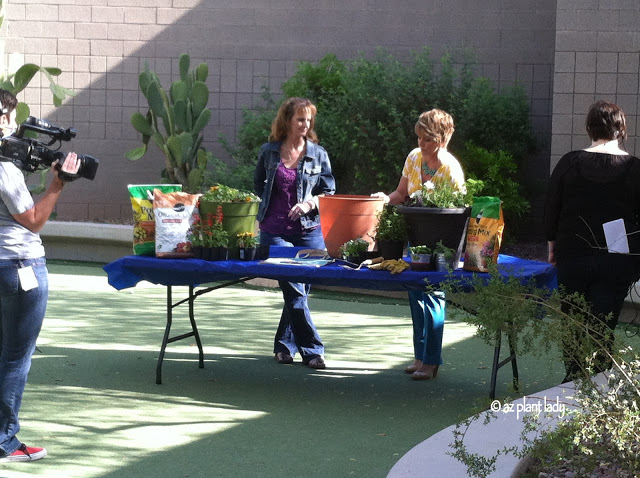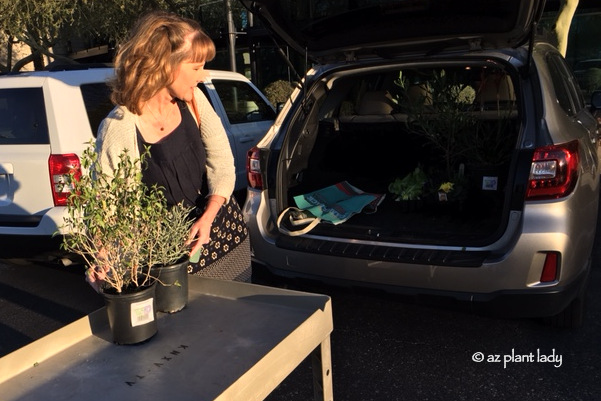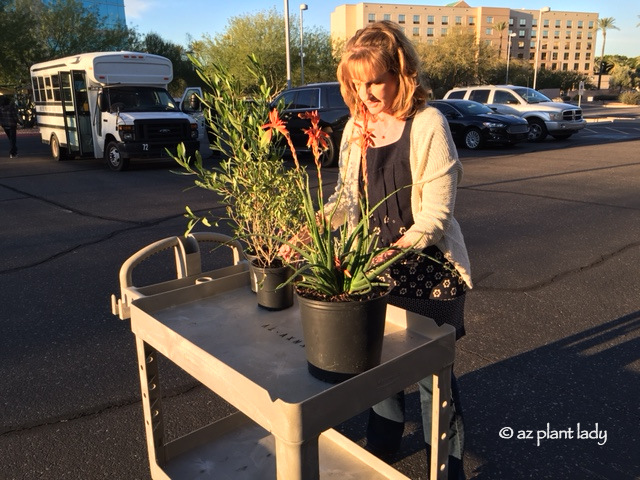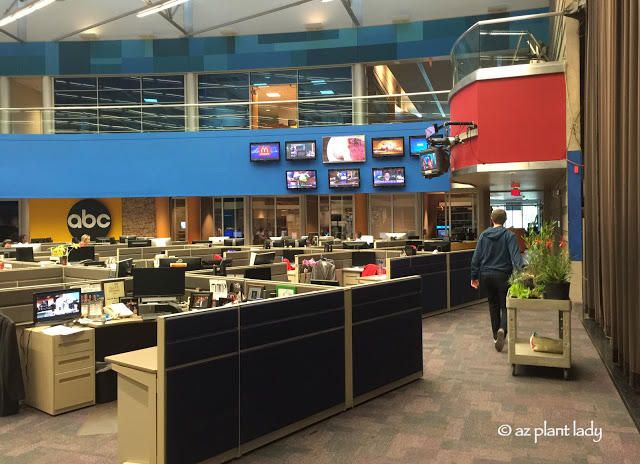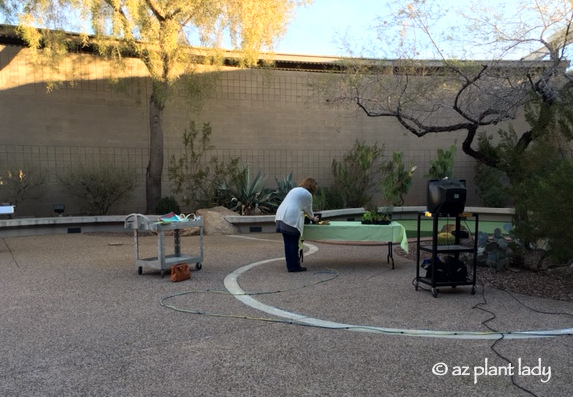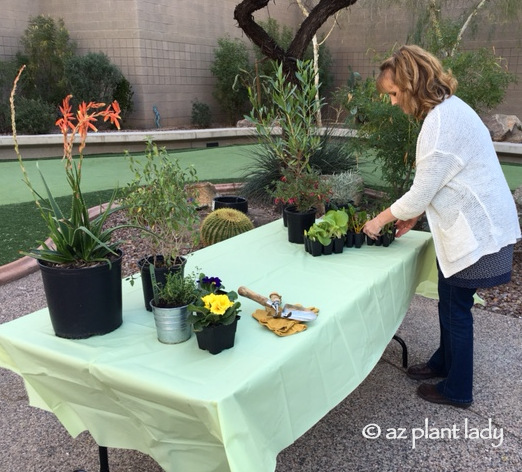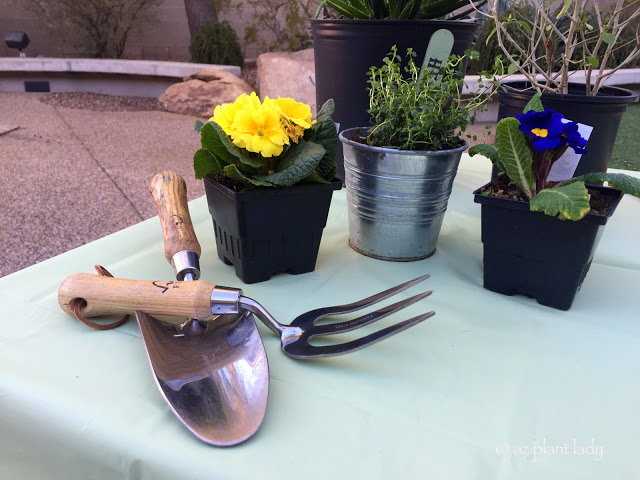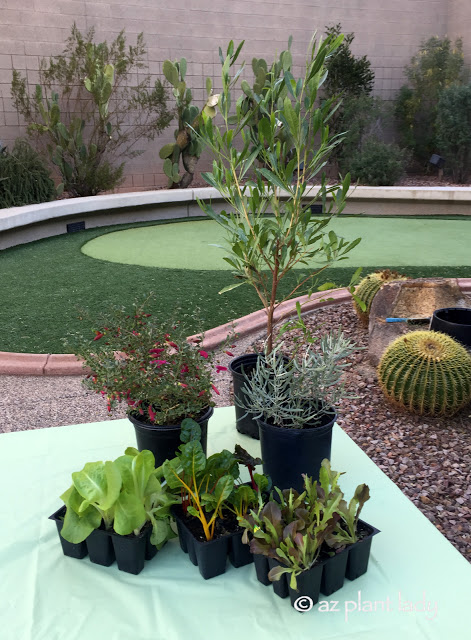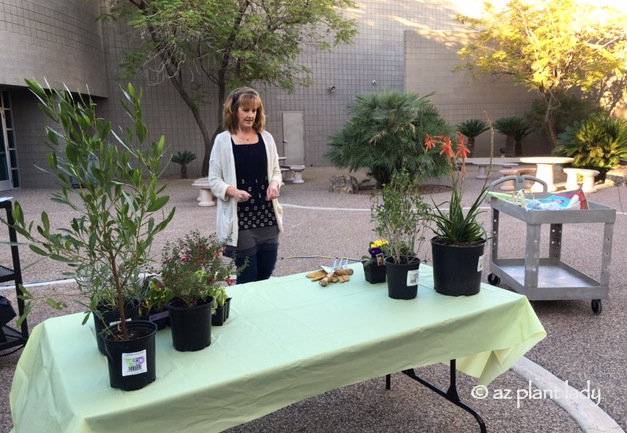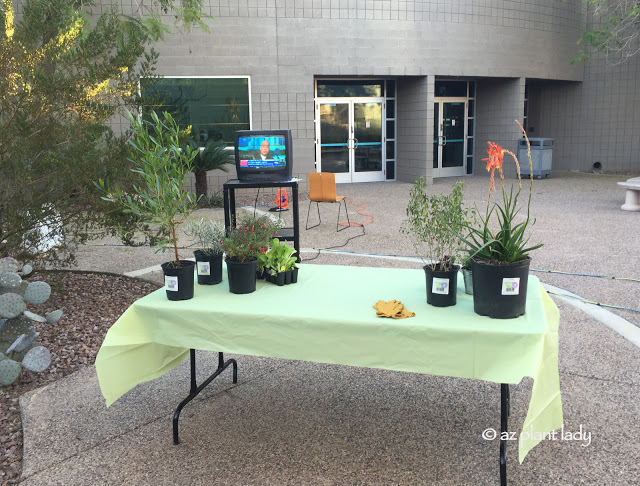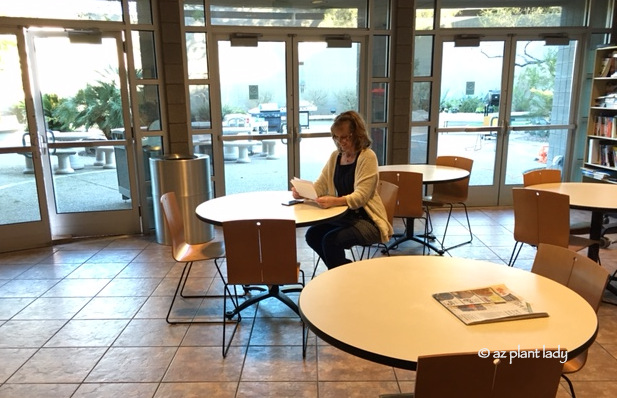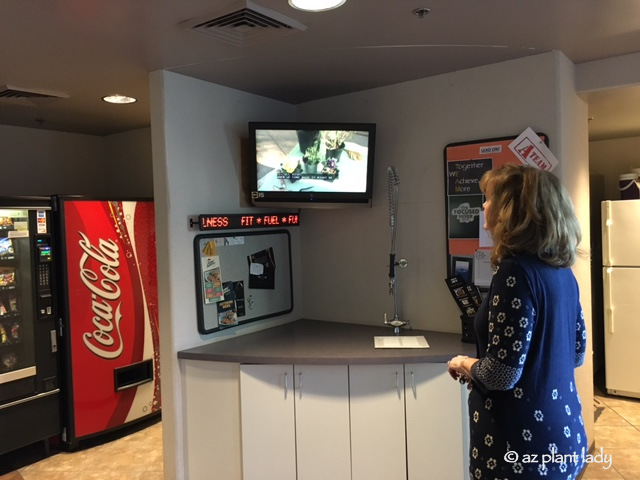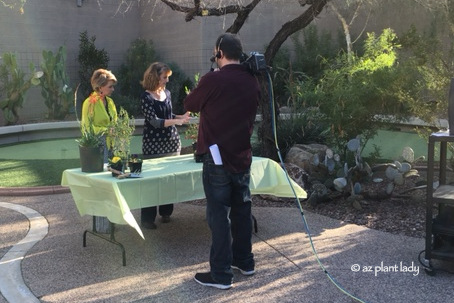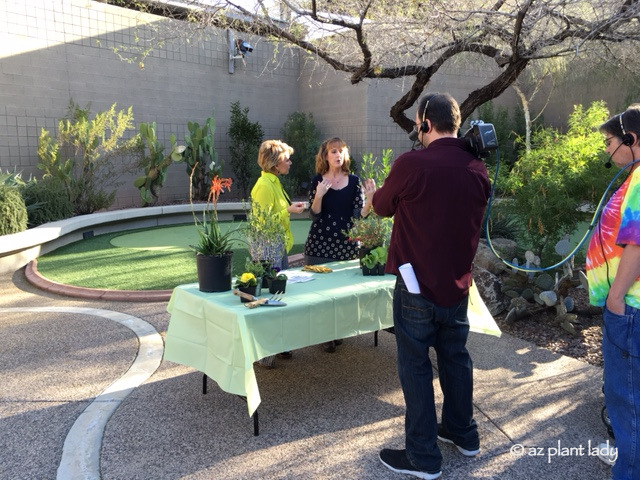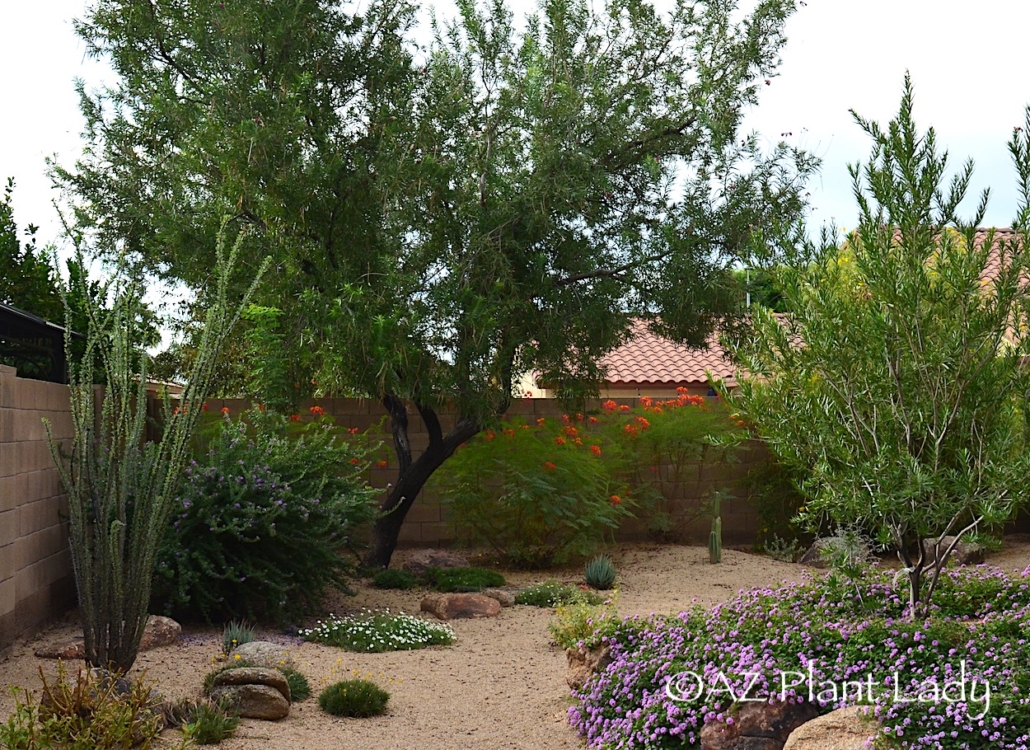
Backyard desert landscape with low-water plants.
Did you know that what you plant today has short-term and long-term benefits? It’s true. As water resources become even more precious, planting wisely is more important than ever. You will enjoy the immediate effects of lowering your outdoor water use while enjoying the knowledge that you are creating a sustainable outdoor space for the future.
Another benefit is that low-water plants are beautiful and increase your outdoor enjoyment.
So, let’s discuss four ways of “planting ahead” to ensure that your desert landscape is resilient for years to come.
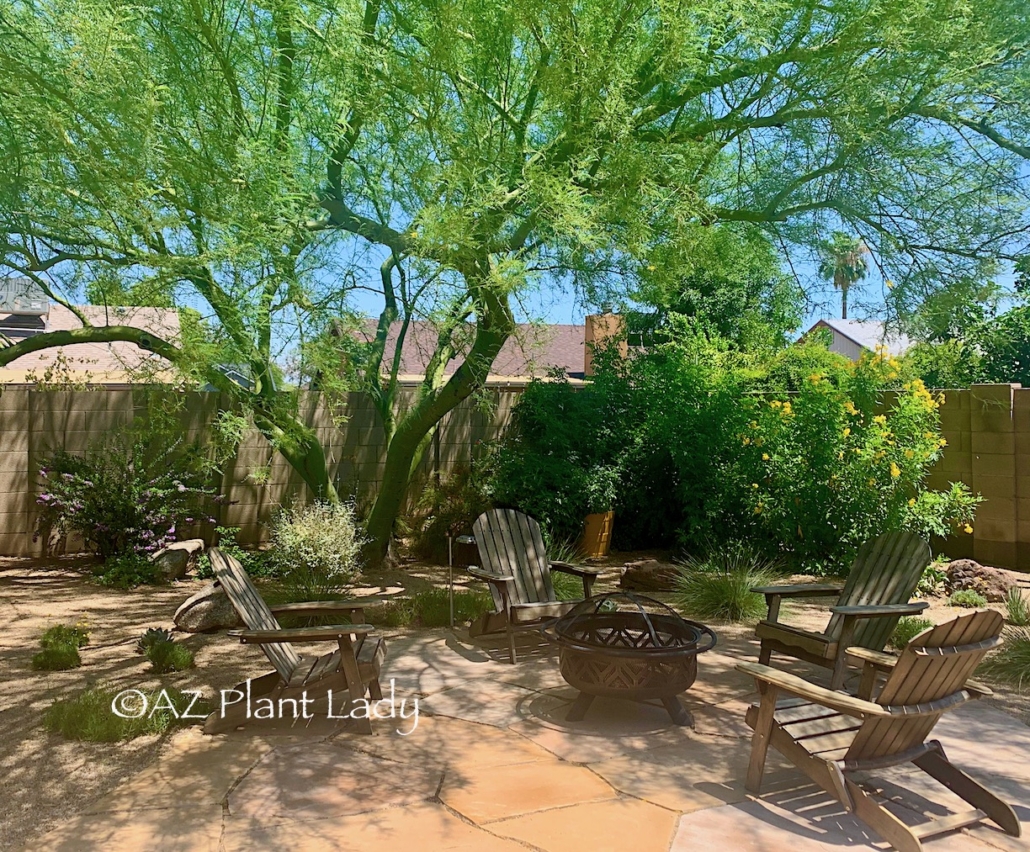
Outdoor seating area underneath the shade of a ‘Desert Museum’ palo verde tree.
Plant More Shade
The benefits of shade in the garden cannot be overstated; trees are a great way to achieve that. Trees offer a welcome respite from the hot desert sun while adding beauty to the landscape. Additionally, trees reduce outdoor temperatures underneath their branches, and when placed on the west, east, or south side of your home, will save money on energy bills.
Native and desert-adapted trees don’t use much water, and plants grown under the branches of trees use less water than those planted in full sun.
Look at the areas around your home and see if there are areas where shade be added. If you have a narrow space where trees won’t fit, consider using tall shrubs such as hop bush (Dodonaea viscosa) to provide shade.
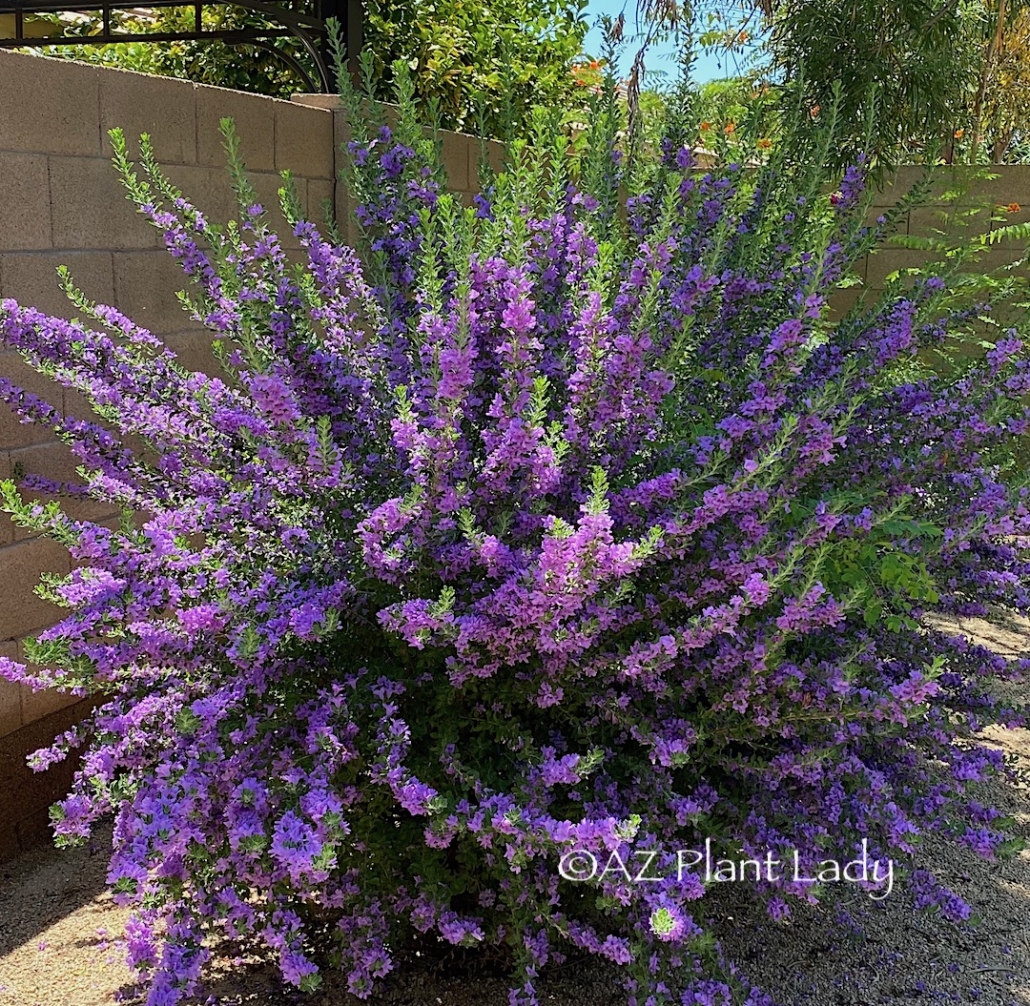
O’Rio Bravo’ Texas Sage (Leucophyllum langmaniae ‘Rio Bravo’).
Plant More Color
People are naturally drawn to color, and you can improve your home’s curb appeal by adding colorful plants. Desert dwellers have many flowering plants to choose from – from groundcovers, shrubs, and vines. Additionally, we have a year-round growing climate so you can always have something in bloom outdoors.
To maximize the color impact of plants, group the same plants together in threes or fives instead of just one. Place colorful plants in high-visibility areas such as against a wall, the corners of your property, and near the front entry where they are sure to be seen.
Avoid the biggest color mistake and stop excessively pruning flowering plants into unnatural shapes. Most flowering shrubs need pruning once a year or less.
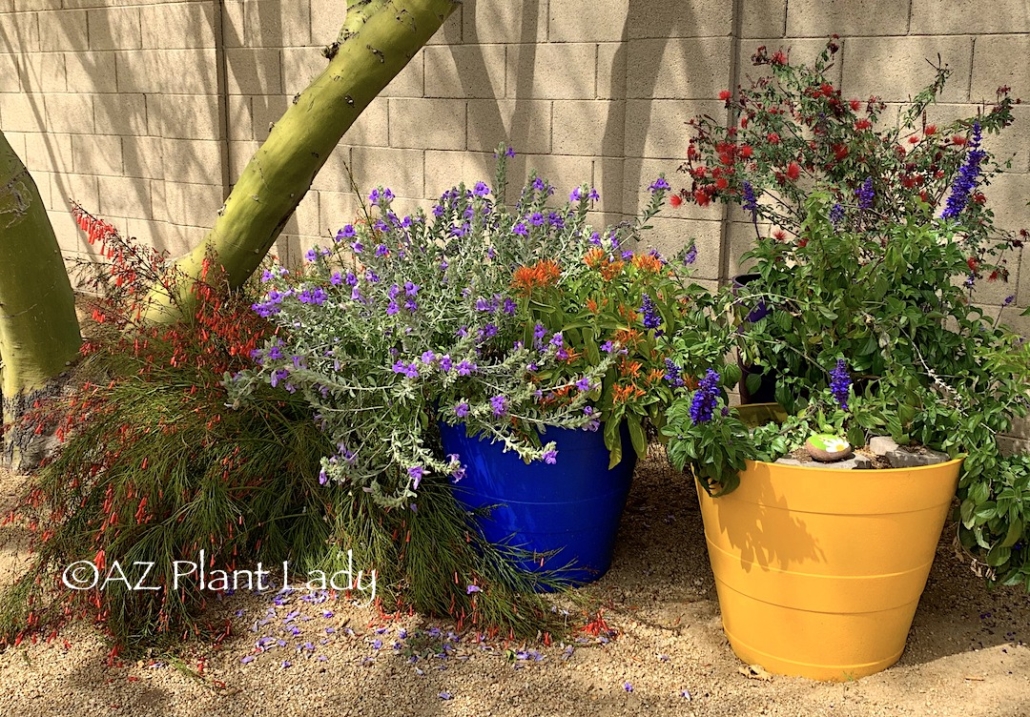
Vibrant pots filled with Baja fairy duster (Calliandra californica), ‘Blue Bells’ emu (Eremophila hygrophana), Mexican honeysuckle (Justicia spicigera), and mealy cup sage (Salvia farinacea) attract pollinators under the filtered shade of a palo verde tree.
Plant More Wildlife
Our gardens can help benefit wildlife by providing food and shelter. A bonus is that you get to view them up close! The easiest way to invite wildlife such as birds, bees, and butterflies is to incorporate plants they are attracted to.
Trees, shrubs, and even cacti can provide shelter, while the blooms from certain plants will provide nectar and seeds. One easy way to encourage pollinators to visit your garden is to replace thirsty flowering annuals in containers and plant flowering shrubs instead. The shrubs will use less water while still providing you with color.
Baja fairy duster (Calliandra californica) is one of my favorite choices for attracting pollinators such as butterflies, hummingbirds, and larger bird species are attracted to the seeds.
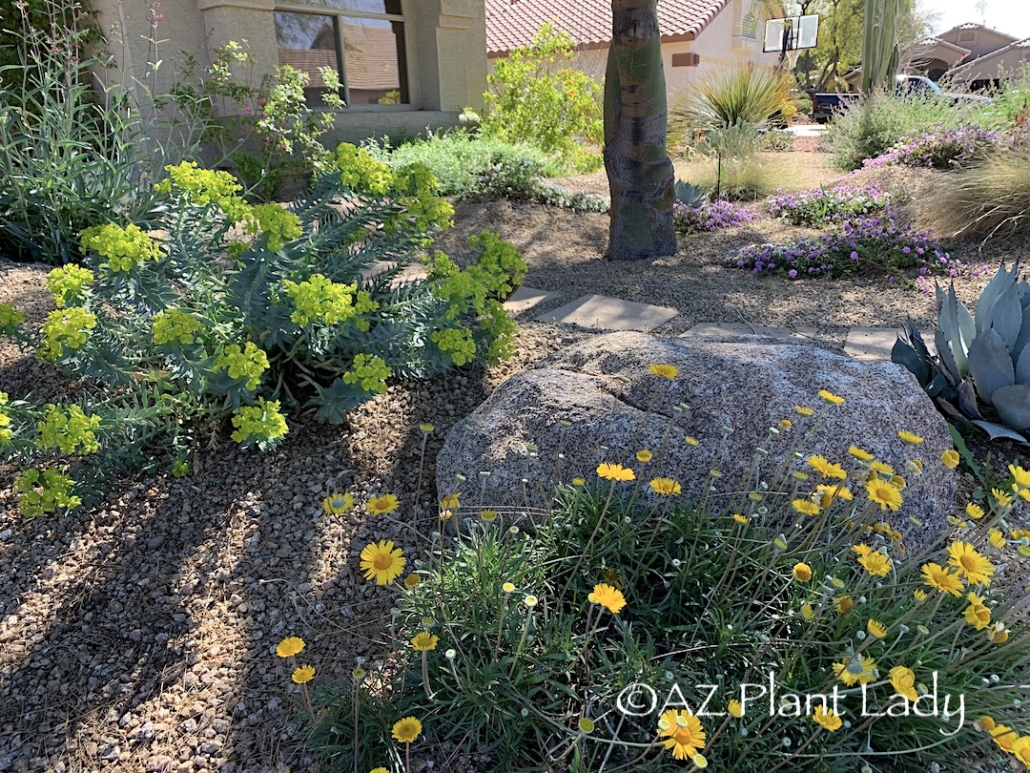
A front yard that had the lawn removed. Flowering groundcovers such as gopher plant (Euphorbia rigida), trailing lantana (Lantana montevidensis), and angelita daisy (Tetraneuris acaulis) add beauty for much less water.
Plant More Water Saving
Plants don’t use the same amount of water – some need more, while others do fine receiving less while still looking great. You don’t need a yard filled with thirsty plants because many beautiful plants use less water (and I’m not just speaking of cacti and succulents).
Switch out high-water-use plants and replace them with those that need less water. Groundcovers are an excellent substitute for a lawn – particularly decorative ones. Many low-growing groundcovers have lush green foliage but require a fraction of the water that a lawn does. While they can’t be walked upon, they make a beautiful addition to the landscape, and many add a colorful element and provide a food source for pollinators. Even better, they require very little maintenance.
Planting ahead involves strategically selecting the plants we choose for our desert landscapes. These four ideas will help you create a beautiful yet sustainable outdoor space that will save water and provide a more sustainable future.
Need help choosing the right low-water plants? I invite you to visit AMWUA:Plants or explore the plants in my award-winning book, Dry Climate Gardening, where you will find useful tools to help you implement these recommendations.


